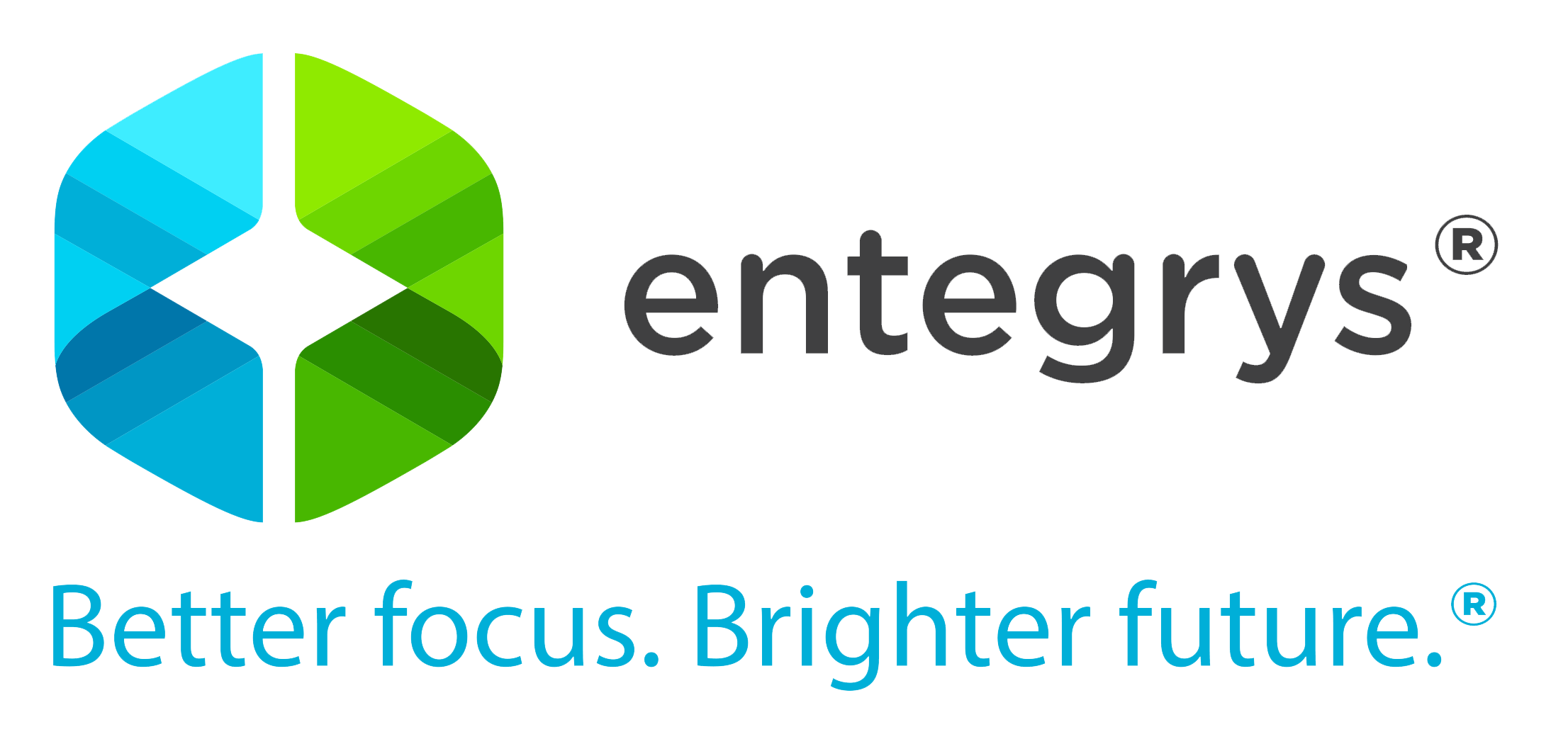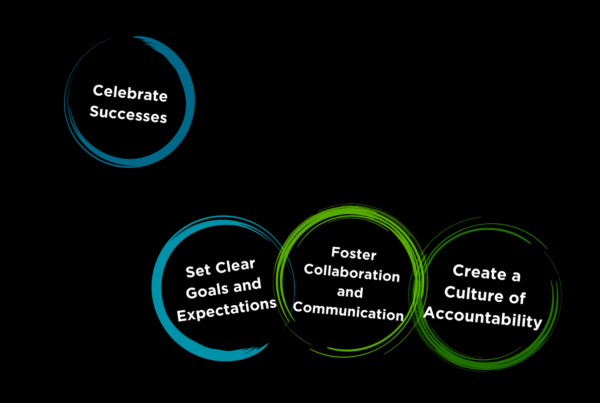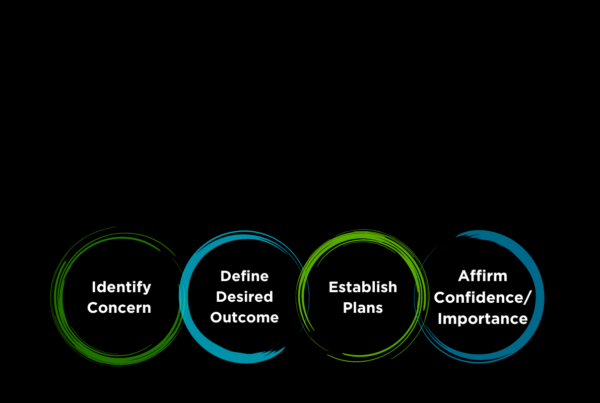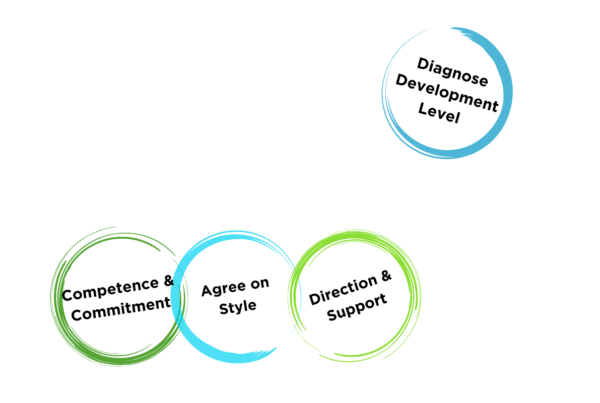Have you wondered what the expression ‘Go slow to go fast’ means?
It is used in many different contexts—everything from:
- understanding the problem before you jump into solution mode,
- planning your route before starting your journey,
- mastering the fundamentals of a sport before trying the more complex moves,
- to learning the basics of mathematics before trying to understand more complex concepts.
In other words, it’s about building a solid foundation before working on your desired outcomes.
We all understand the importance of a strong foundation for a building. However, in our fast-paced world, we want to get to our outcome before a competitor beats us to it. We want everything faster, cheaper and with less effort.
But the reality is that so many important outcomes we seek in life take time if we want them to be stable and lasting.
The bamboo example
The Chinese bamboo is a perfect example of “go slow to go fast”. After planting, the seeds need to be tended carefully for up to five years before a sprout even breaks through the ground. But once it does, it can grow up to ninety feet in five weeks! That’s over thirty inches in a day: over one inch in an hour!
And yet the bamboo plant can withstand hurricanes without breaking. In fact, it is actually stronger than steel. How is this possible?
The answer lies in what is happening during those five years. The plant is developing a complex root system with rhizomes—horizontal underground stems that can produce both roots and above ground shoots.
Growing high-performance teams
Similarly, suppose you want a high-performance team that can weather the storms of problems, time crunches, and diverse opinions and personalities. You will also need to invest the time to build strong roots—a strong foundation.
But that doesn’t mean it will take five years! In fact, you can build a strong foundation in a day or two. Let me explain.
American psychological researcher, Bruce Tuckman, developed a great model—that has withstood the test of time—to explain the stages groups experience as they grow into high-performance teams.
By working proactively, you can lead your team through an alignment process that will help them move faster and more smoothly to the performing stage.
Read on to discover what team members need at each stage and the proactive steps you can take in a team alignment session to build the foundation for a high-performance team. If you already have an established team, taking a day or two for team alignment will still prove to be a worthwhile investment!
Tuckman’s Model of Team Development & Team Alignment Steps
Stage 1: Forming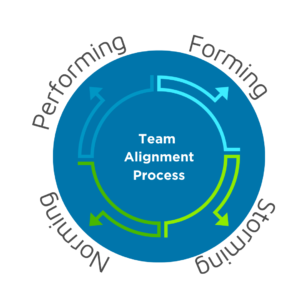
Forming is the first stage and typically happens when your group has just come together. However, the team can also find itself back here when a new member joins the team. At this stage, team members are wondering: Why am I here? What are we trying to accomplish?
Team alignment steps:
As a leader, your task is to set the direction for the team. Direction includes:
- Mission – What is our primary purpose? What business are we in?
- Vision – What do we want to become? What will our ideal future look like?
- Key Results – What do we need to do and accomplish to achieve the mission and vision?
- Team Goals – What are our desired outcomes and time frame?
Stage 2: Storming
At this stage, team members need a clear sense of team structure and how their role fits with other roles in the team. They want to know: Who’s in charge? What are my specific roles and responsibilities? What is our decision-making process?
Team alignment steps:
The leader’s job is to clarify roles, i. e.:
- Roles and responsibilities – What are the areas of responsibility for each team member? E.g. producing social media content vs. optimizing the content to increase conversions.
- Objectives – What measurable results must each member produce to achieve the team goals?
- Decision-making – What types of decisions will be required within the team? Who will make each kind – the leader? the team? or by leader and team consensus?
Stage 3: Norming
Goal and role clarity will help the team move successfully through Forming and Storming to the Norming stage. At this point, members need to know how they will work together so the inevitable collaboration issues don’t jeopardize team effectiveness.
Team alignment steps:
The leader’s role is to work with the team to establish clear guidelines. The leader will need to create a safe environment for an open discussion around:
- Team values – What values do the team want to guide their interactions? …
Respect? Autonomy? Integrity? Communication? Low/high collaboration? - Operating guidelines – How will the team live out these values in their ongoing interactions? What behaviours are they expecting from each other? …
To provide weekly updates on their activities? To address concerns before they escalate? To focus feedback on behaviors, not personalities?
Stage 4: Performing
Finally, the team needs a way to gauge performance—to answer the question, “How are we doing?”
Team alignment steps:
The leader’s role here is to help the team define success. This includes defining:
- Performance standards – How will the team know how effectively they have met both the team goals and operating guidelines?
- Celebrations and Rewards – How will the team recognize both individual and group success?
Once you have invested the time to build this foundation, you can enjoy the fruit of going slow to go fast! The fruit will be evident in the quality of the outcomes and the stability of the team!
